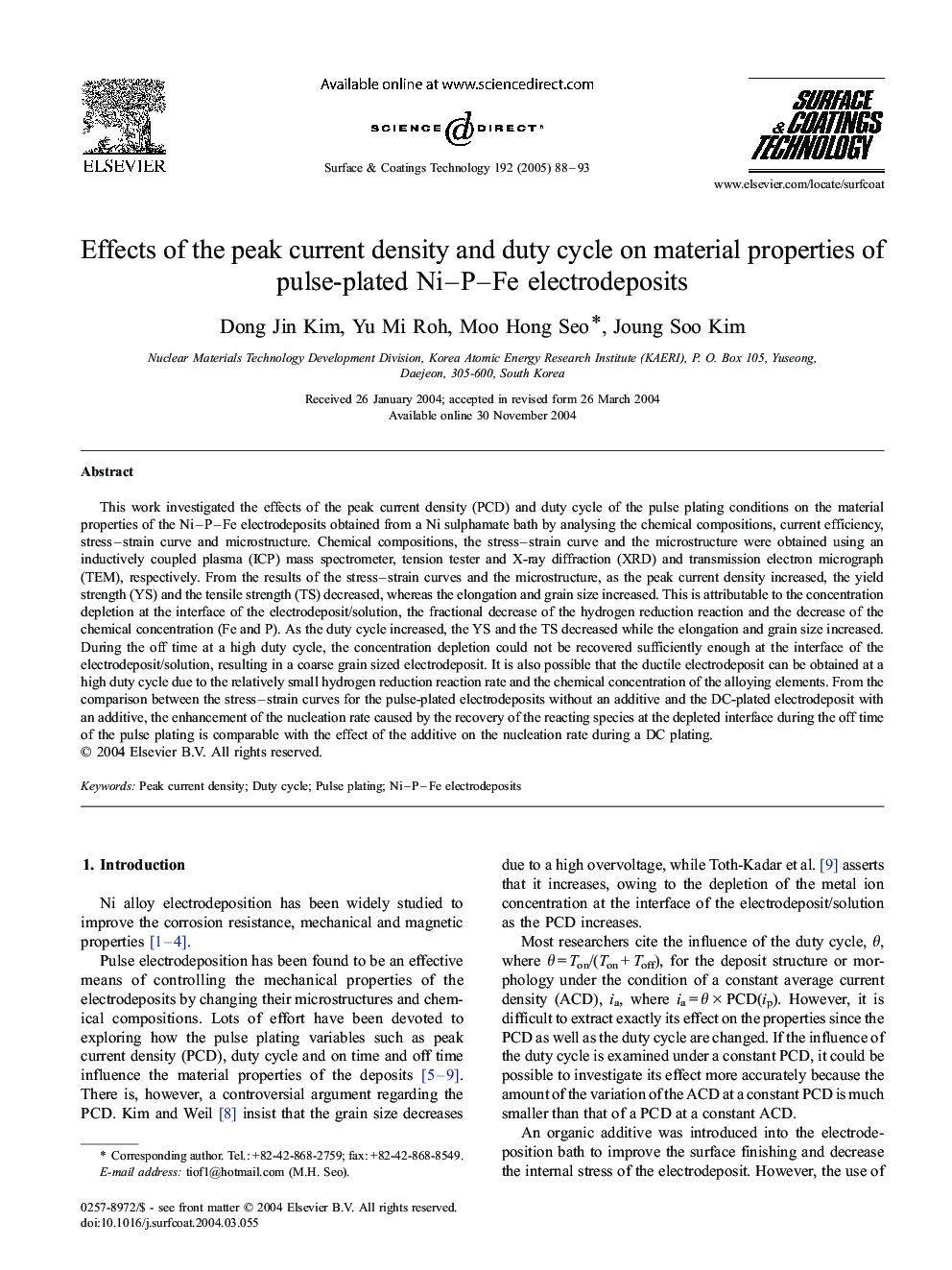| Article ID | Journal | Published Year | Pages | File Type |
|---|---|---|---|---|
| 10668744 | Surface and Coatings Technology | 2005 | 6 Pages |
Abstract
This work investigated the effects of the peak current density (PCD) and duty cycle of the pulse plating conditions on the material properties of the Ni-P-Fe electrodeposits obtained from a Ni sulphamate bath by analysing the chemical compositions, current efficiency, stress-strain curve and microstructure. Chemical compositions, the stress-strain curve and the microstructure were obtained using an inductively coupled plasma (ICP) mass spectrometer, tension tester and X-ray diffraction (XRD) and transmission electron micrograph (TEM), respectively. From the results of the stress-strain curves and the microstructure, as the peak current density increased, the yield strength (YS) and the tensile strength (TS) decreased, whereas the elongation and grain size increased. This is attributable to the concentration depletion at the interface of the electrodeposit/solution, the fractional decrease of the hydrogen reduction reaction and the decrease of the chemical concentration (Fe and P). As the duty cycle increased, the YS and the TS decreased while the elongation and grain size increased. During the off time at a high duty cycle, the concentration depletion could not be recovered sufficiently enough at the interface of the electrodeposit/solution, resulting in a coarse grain sized electrodeposit. It is also possible that the ductile electrodeposit can be obtained at a high duty cycle due to the relatively small hydrogen reduction reaction rate and the chemical concentration of the alloying elements. From the comparison between the stress-strain curves for the pulse-plated electrodeposits without an additive and the DC-plated electrodeposit with an additive, the enhancement of the nucleation rate caused by the recovery of the reacting species at the depleted interface during the off time of the pulse plating is comparable with the effect of the additive on the nucleation rate during a DC plating.
Related Topics
Physical Sciences and Engineering
Materials Science
Nanotechnology
Authors
Dong Jin Kim, Yu Mi Roh, Moo Hong Seo, Joung Soo Kim,
